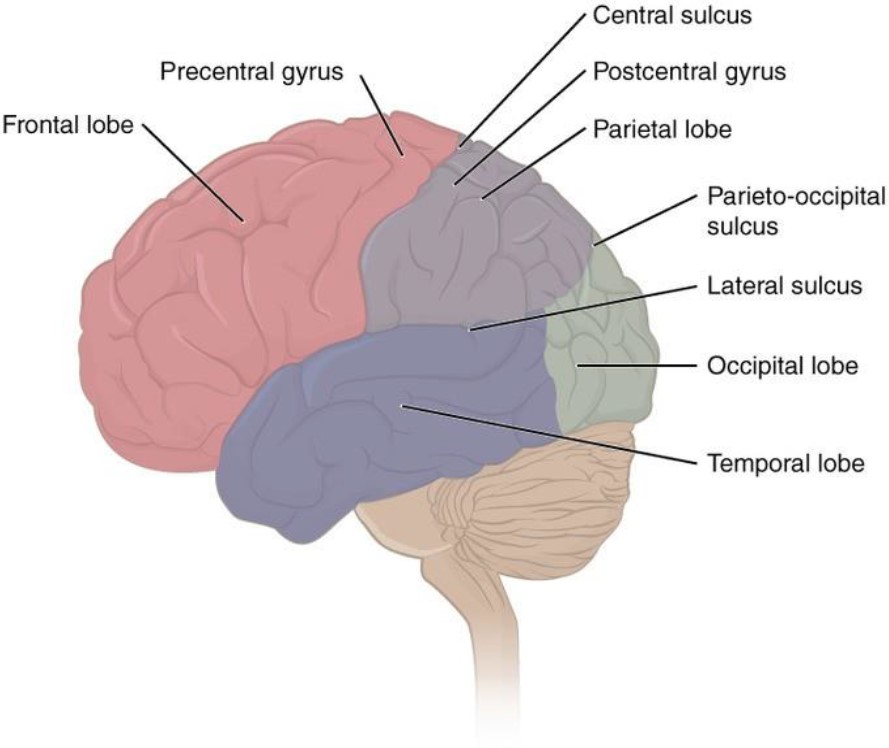7.8 Brain Areas Associated with Memory
Imaging research and lesion studies have led scientists to conclude that certain areas of the brain may be more specialized for collecting, processing, and encoding specific types of memories. Activity in different lobes of the cerebral cortex have been linked to the formation of memories.

Sensory Memory
The temporal and occipital lobes are associated with sensation and are thus involved in sensory memory. Sensory memory is the briefest form of memory, with no storage capability. Instead, it is a temporary “holding cell” for sensory information, capable of holding information for seconds at most before either passing it to short-term memory or letting it disappear.
Short-Term Memory
Short-term memory is supported by brief patterns of neural communication that are dependent on regions of the prefrontal cortex, frontal lobe, and parietal lobe. The hippocampus is essential for the consolidation of information from short-term to long-term memory; however, it does not seem to store information itself, adding mystery to the question of where memories are stored. The hippocampus receives input from different parts of the cortex and sends output to various areas of the brain. The hippocampus may be involved in changing neural connections for at least three months after information is initially processed. This area is believed to be important for spatial and declarative (i.e., fact-based) memory as well.
Long-Term Memory
Long-term memory is maintained by stable and permanent changes in neural connections spread throughout the brain. The processes of consolidating and storing long-term memories have been particularly associated with the prefrontal cortex, cerebrum, frontal lobe, and medial temporal lobe. However, the permanent storage of long-term memories after consolidation and encoding appears to depend upon the connections between neurons, with more deeply processed memories having stronger connections.
Conclusion
Memory and cognition are the two major interests of cognitive psychologists. The cognitive school was influenced in large part by the development of the electronic computer. Psychologists conceptualize memory in terms of types, stages, and processes.
There are a number of factors and biases that make our memory of information and events more or less effective. Researchers now are able to identify many such factors and advise on ways to commit things to memory more easily – strategies such as the memory palace, chunking, and taking advantage of distinctiveness come to mind. But, as we will discuss in the next chapter, there are additional factors that can make us forget or misremember things, so it’s not just about utilizing all the strategies we have discussed; it’s about avoiding pitfalls as well.

